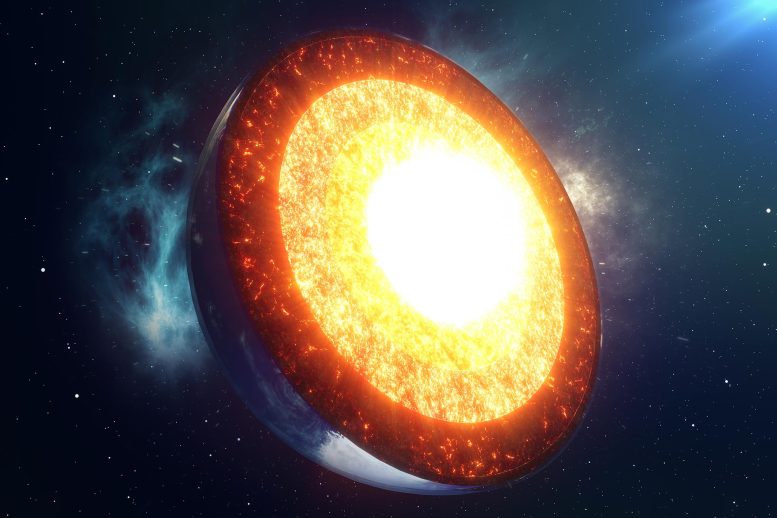
Researchers at RIKEN have measured the sound velocity of pure iron at extreme pressures, shedding light on Earth’s core composition and enabling improved measurements for other materials.
Scientists have more accurately constrained the composition of the Earth’s core by performing sound-velocity measurements at double the pressure of previous ones.
Building on a program started 15 years ago by Alfred Q. R. Baron in the RIKEN Materials Dynamics Laboratory, researchers have finally been able to measure the sound velocity of pure iron at static pressures corresponding to those of the Earth’s inner core. This was made possible at RIKEN SPring-8 Center’s Quantum NanoDynamics Beamline: combining its world-leading spectrometer with new developments in x-ray optics and a new type of high-pressure cell, the team was able to perform measurements under stable conditions at pressures about double their previous record, and more than three times higher than any other facility in the world (Figure 1).
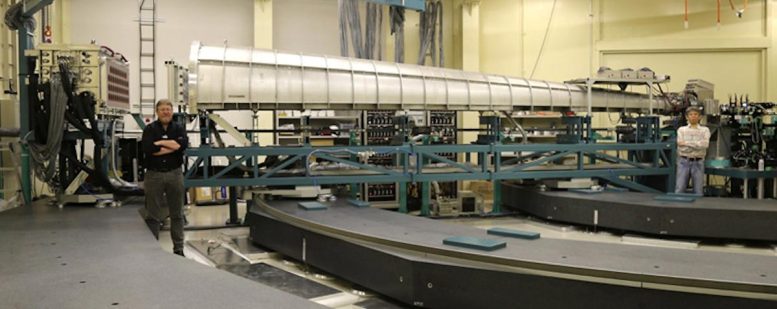
Figure 1: The high-resolution spectrometer at the RIKEN Quantum NanoDynamics Beamline (BL43LXU) of the RIKEN SPring-8 Center. The photos show the main spectrometer arm, sample positions, and two scientists for scale. Credit: © 2023 RIKEN SPring-8 Center
The work is interesting because it allows constraints to be placed on the composition of the Earth’s core. “We actually have amazingly little information about the center of the planet we live on,” says Baron. “Other work tracking the progress of seismological waves from earthquakes through the planet give us a model for the density and sound velocity as a function of depth—but that’s about it: the detailed composition remains unknown and the subject of debate, as the composition is important both to understand the present structure of the planet and also the evolution of the planet and even the Solar System.”
The most recent measurement, published in Nature Communications, was a collaboration between Baron’s Materials Dynamics Group at the RIKEN SPring-8 Center, Eiji Ohtani and Daijo Ikuta of Tohoku University, and researchers at Ehime University and the Japan Synchrotron Radiation Research Institute (SPring-8/JASRI). The team measured the sound velocity of pure iron as a function of pressure up to densities exceeding that of the Earth’s inner core, where the pressure exceeds 300 gigapascals, validating a linear relation known as Birch’s law.
Using the new results they propose a model where, in addition to iron and nickel, the Earth’s core has small amounts of silicon and sulfur.
“Further, and perhaps most important, the method can be extended to other materials allowing a new level of precision for measurements of sound velocities of materials at extreme pressures,” says Baron.
Reference: “Sound velocity of hexagonal close-packed iron to the Earth’s inner core pressure” by Daijo Ikuta, Eiji Ohtani, Hiroshi Fukui, Takeshi Sakai, Daisuke Ishikawa and Alfred Q. R. Baron, 25 November 2022, Nature Communications.
DOI: 10.1038/s41467-022-34789-2

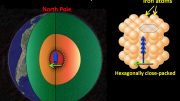

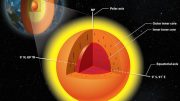

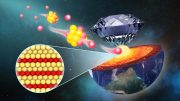
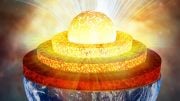

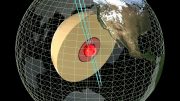
Be the first to comment on "Core Discoveries: Extreme Experiments Unlock Earth’s Inner Secrets"